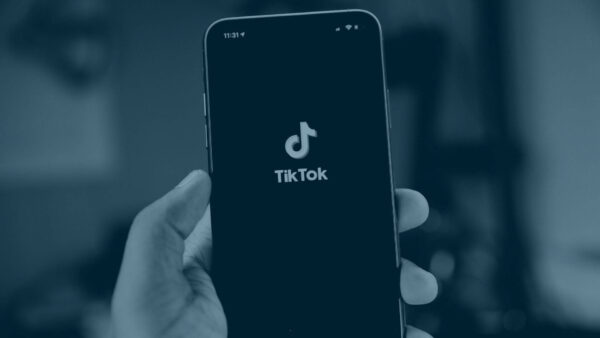
The Automotive Trust Divide: Educating, Not Marketing, to Customers
Automotive buyers have a long lifecycle. They won’t buy a vehicle for years; then, suddenly, they’re using at least 24 touchpoints to learn about which vehicle to buy, usually within a three-week period.
Dealers need to be aware of the automotive trust divide and learn to market with a long-term relationship in mind. 9 Clouds’ founder, Scott Meyer, sat down (virtually) with Jim Dykstra, CEO of VinAdvisor, to ask whether current dealership marketing meets the needs of today’s customers.
You can view the video below, see the original article here, or read the transcript below.
Does Your Dealership Marketing Strategy Meet the Needs of Today’s Consumer?
JIM DYKSTRA: Franchised new car dealers spend more than $17 billion in marketing and advertising annually. Naturally, they want to see their returns on this huge spend improve.
Consumers enter the market with an expectation for contemporary purchase experience. Therein lies the disconnect.
Dealers compare what they offer consumers to what other dealers offer. Consumers compare dealers to Amazon.com, StubHub.com, Southwest.com, and myriad others who have used technology to simplify their most complex purchases.
To improve returns, dealership marketing will need to communicate how dealers have made car buying easier.
Make Car Buying Easier with Personalization
SCOTT MEYER: True. And they will actually have to make the process easier.
We just completed our 2017 State of Automotive Marketing report. We surveyed dealers throughout North America and found that nearly 30% of dealers still struggle with under-usage of their CRM.
Additionally, only 28% know the purchase or service history of potential customers who walk in the door. It’s hard to share tips, like Amazon’s “You might also like,” if dealers don’t know or track what customers have already done.
What Auto Dealers Can Learn from the Broader Market
JIM: This brings us to every dealer’s third rail: the necessity to share information. A dealer spends 5% on marketing and 95% or more on lead generation. They see their dealership as their brand and believe every other dollar is wasted unless it drives leads.
To understand their reticence, one need only visit a new car dealer’s FAQ page. First thing you’ll notice — dealers don’t have FAQ pages. At best, you get an About page that tells a bit of dealer history. Dealers believe more info means less sales.
Instead, what you are likely to find is a chatbot. What you quickly realize is you only get partial answers, then a request for your phone number and/or email so someone from the store can help you. Not surprisingly, no matter the question, the answer can only be found once you visit the dealership.
Consumers expect and deserve more. Millions of them use TurboTax to accurately prepare and file federal and any of 50 different state income tax returns — but any question about a new Ford or Toyota requires a dealership visit?
Dealers’ overspend on lead gen reduces advertising ROI and, worse, service retention and repurchase loyalty. Time to learn from the broader market.
Teach First, Market Second
SCOTT: Completely true. Not only does it make the customer happy, but they’re going to find the information anyway. Why wouldn’t you want it to be from you?
We have a saying at 9 Clouds that if someone learns from you, they’ll buy from you. Dealers who educate their customers will build trust and be more likely to get the sale.
Better yet, when dealers teach customers, they will also show up better on Google. Providing helpful information is the “secret” to SEO. Google says the average customer takes 24 steps before purchasing a vehicle, and 19 of them are digital. Time to get out there!
This brings up the next challenge for dealers: by the time someone fills out a form on your site, they’ve already decided. The average customer only visits 2.2 dealerships on average. That means that your customers are won and lost before submitting a form. That’s why forcing them to visit or call to get an answer is a guaranteed recipe to lose sales.
Better to start building relationships and track what pages a customer visits instead of asking them to fill out a form. They know the dealer is going to blast them with email, so why would they?
The Trust Divide Between Consumers and Car Dealers
JIM: The great divide between consumers and car dealers is trust. The solution: market price transparency.
Dealers who try a “one price” strategy quickly find out it doesn’t work. Why? Because it’s the dealer’s price, not the market’s.
Imagine a customer named Lisa who plans to buy $50,000 of GM stock and a new $50,000 Chevy Tahoe in the next few days. A single click to her E*TRADE account offers Lisa independent market research on GM stock and complete transparency into GM’s share price.
Lisa and all those who buy GM stock today will pay the same price whether they invest $5 or $50,000. Market-wide resources and price transparency allow Lisa to confidently invest in minutes.
But her Tahoe shopping is altogether different. She must visit different sites for vehicle reviews and dealer reviews. As for price — some include incentives, others don’t. Some a few incentives, others incentives most are not eligible to receive. This is Google’s Auto Consumer studies detail consumers having 24 touchpoints before buying a car.
With no way to differentiate price, consumers eventually drive into a dealership for a confusing three- to five-hour purchase experience. The truth is this legacy sales experience is costing all of us billions.
Less than 30% of consumers return to the selling dealer for service or make a repeat purchase. No better for 70% of dealership salespeople turnover each year. 99% of consumers expect car buying to be a hassle, so they defer even when they want a car.
Dealers who learn to share more, not less, will be rewarded with more sales, improved service retention, and repeat purchase loyalty that grows sustainable profitability.
9 Clouds doesn’t just encourage clients to educate — we do it ourselves.
If you want to learn about areas of opportunity for your dealership, reach out to us about a digital audit. We’ll help you identify the biggest openings online to reach customers, whether we work together or not.






